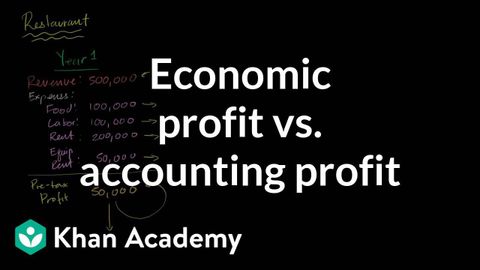
Subtitles & vocabulary
Economic Profit vs Accounting Profit
00
iamkai903232 posted on 2015/05/06Save
Video vocabulary
make
US /mek/
・
UK /meɪk/
- Transitive Verb
- To arrange or prepare something e.g. dinner
- To get to (a place) on time
- Noun
- Product made by a particular company; brand
A1
More opportunity
US /ˌɑpɚˈtunɪti, -ˈtju-/
・
UK /ˌɒpə'tju:nətɪ/
- Noun (Countable/Uncountable)
- Time, situation when a thing might be done; chance
- A favorable time or occasion for doing something.
A2TOEIC
More essentially
US /ɪˈsenʃəli/
・
UK /ɪˈsenʃəli/
- Adverb
- Basically; (said when stating the basic facts)
- Used to emphasize the basic truth or fact of a situation.
A2
More business
US /ˈbɪznɪs/
・
UK /ˈbɪznəs/
- Noun (Countable/Uncountable)
- A company formed for making profit
- Matter that has to be dealt with; task; situation
- Adverb
- Engaged in work or commercial activity.
- Seriously; with determination.
A1TOEIC
More Use Energy
Unlock All Vocabulary
Unlock pronunciation, explanations, and filters
